Narcolepsy Around the World: From Witchcraft to Awareness
Exploring narcolepsy across six continents for World Narcolepsy Day
Guest Post by: Kayla Douglas
With the inaugural World Narcolepsy Day (Sept. 22, 2019) recognized on six continents in honor of the three million people with narcolepsy worldwide coming up, I started wondering about the faces and stories behind these statistics. My own experience with narcolepsy has been a long journey, so how did the stories of people around the world compare to my own?
Finding a community helps us feel more understood.
Preachers and prophets said it was witchcraft. Other claimed it was ‘sleeping sickness’ caused by the tsetse fly. But Edgar, from Kenya wasn’t surprised when he got his diagnosis of narcolepsy. He has a supportive wife and mother but wants to continue to educate more of his community. He is now a member of Narcolepsy Africa Foundation in Kenya and also the coordinator of the Nairobi team.
In Italy, the traditional ‘siesta’ or afternoon nap is a past-time and sleep is seen as laziness and weakness. So when Massimo began having trouble staying alert at work, he felt like a ‘parasite of society’.
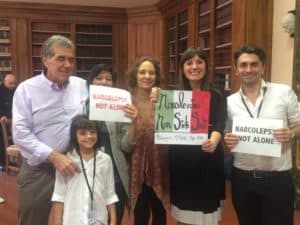
Today he’s the president of Associazione Italiana Narcolessia e Ipersonnia Idiopatica (AIN). He advocates for the rights of people with narcolepsy and Idiopathic Hypersomnia and helps raise awareness so they can be diagnosed efficiently.
His advice is, “Don’t surrender before the fight! You can fail a hundred times but then you win. If you never try it’s impossible to succeed.”
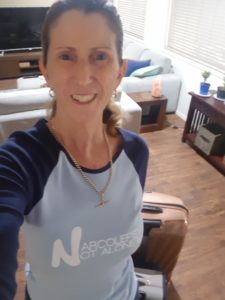
In Australia, Fiona felt isolated and alone while dealing with narcolepsy after she was diagnosed at age 47. Medications and their side effects affected her state of mind and she became negative and reactive until she found a community that understands.
“For a long time after my diagnosis, there was an internal struggle going on between accepting the new ‘me’ and moving forward and longing and waiting for the old ‘me’ to come back. I shut myself away in the process thinking that no one wanted the new ‘me’, not even the narcolepsy community.” When Fiona attended a conference organized by Narcolepsy Australia, all of that changed.
“I met so many wonderful and inspirational people at the event and for the first time since my diagnosis, I felt that sense of belonging again.” Now she is a trained speaker with Project Sleep’s Rising Voices of Narcolepsy program.
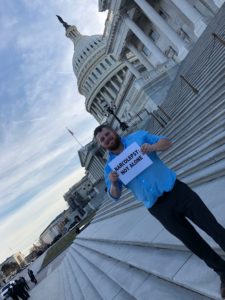
In the United States, Matt Horsnell spent 13 years searching for his diagnosis. Now he is dedicated to raising awareness to reduce the gap between symptom onset and diagnosis. He has participated in the Know Narcolepsy campaign and advocated with project Sleep and the Sleep Research Society for federal funding. He likes to participate in Wake Up Narcolepsy’s online groups and is a trained speaker with Project Sleep’s Rising Voices of Narcolepsy program.
Gloria was diagnosed at 35 years old in Argentina. She has had symptoms since childhood. “The exhaustion from demanding too much of my body, nights with heavy nightmares, occasional sleep paralysis, and cataplexy leave a bitter taste some days.”
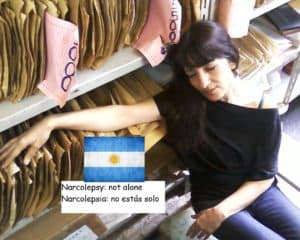
But medication helps her mitigate symptoms and she stays positive saying: “You have to keep going. The dark and uneasy times were relieved a lot when I began to work with narcolepsy.”
Gloria started her own blog Tengo Narcolepsia and was asked to lead an organization called Asociación de Narcolepsia e Hipersomnias de Argentina (ANHA). “I can help others by creating networks so they are not alone in this.”
In Japan, it’s common to see everyone’s heads nodding, their eyes closed as they doze on their way home. Sleeping is undervalued and seen as wasting time. Sleepy_autie, who wishes to remain anonymous, struggles to fit in with his overworked peers.

He joined the Japan Narcolepsy Association, Narukokai, the oldest narcolepsy patient network to find support. It was started in 1967 so it existed long before he was born. But he admitted that it took him more than 15 years to join the community because he didn’t feel as if he had been invited.
So this is an invitation to all people with narcolepsy or other sleep disorders and their supporters, you are invited to the community. Your experience is valid and your voice is welcome.
For World Narcolepsy Day, advocacy organizations, researchers, clinicians, drug developers, local communities, and individuals come together to build a brighter future for all people with narcolepsy and idiopathic hypersomnia.
While cultures vary across continents, the symptoms of narcolepsy are a common thread.
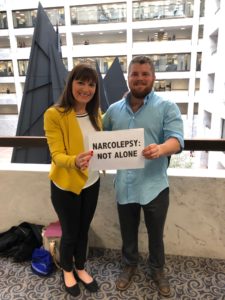
Matt wakes up after eleven hours of sleep and feels as tired as when he laid down. “Imagine staying awake for 48 to 72 hours and then trying to blend into society in an agreeable way,” Matt says. He hides inner exhaustion behind a smile, remains quiet in case his speech is slurred and avoids confrontation to stay on his feet.
“But I’m stronger than the loss of muscle tone brought on by cataplexy. And I’m deserving of the wakefulness that eludes me.”
-Matt Horsnell
Excessive daytime sleepiness is the most well-known symptom of narcolepsy. But that doesn’t mean that nighttime sleep is easy. Disrupted nighttime sleep is another symptom of narcolepsy and sleepy_autie says, “I can hardly sleep three or four hours continuously. I get headaches from the medication and my body and brain are screaming for rest. That’s how the brain talks to me.”
One day, sleepy_autie was cooking in the kitchen with his mom at age 14. When his mother said something funny, his knees buckled as they so often did. Luckily his mom was there to catch him from falling onto the stove. She was really surprised because she thought her son collapsing when he laughed was just a silly thing he did for fun. Suddenly, she recognized that it was serious.
Before this incident, sleepy_autie’s parents believed he was just going through a phase, and as he grew up he would stop doing this collapsing thing. His diagnosis was difficult for his parents and they always told him, “don’t make yourself sick” meaning don’t let your mentality bring you down physically. In Japanese culture, many physical illnesses are seen as having a mental cause, so for much of his life, he has felt like his condition is his fault. It wasn’t until his diagnosis that they learned his collapses were from cataplexy a symptom of narcolepsy.
Cataplexy is defined as striking sudden episodes of muscle weakness, usually triggered by emotions such as laughter, exhilaration, surprise, or anger. Everyone’s experience with cataplexy is unique. Some people may experience it in their face or hands like Matt’s casual mention of slurred speech.
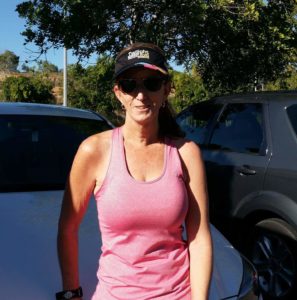
Fiona began having [cataplexy] episodes where she would fall down and not be able to move, speak, or open her eyes on her walks to and from work. “It was humiliating and I’m sure there were times passers-by thought I was passed out drunk. I would then get back up and once steady on my feet, continue on to work. It was scary when it happened in the dark.” Her cataplexy episodes were what lead her to push for a diagnosis.
After being diagnosed she learned the hallucinations she had been experiencing for years, sleep paralysis, brain fog and trouble concentrating, and disrupted night-time sleep, were all symptoms of narcolepsy.
Massimo began seeing demons during the night when he was a young boy. When he experienced cataplexy, he thought it was the devil trying to keep him from having emotions. When his grandfather passed away, the cataplexy got worse and he was treated for psychiatric problems. When Massimo was diagnosed with narcolepsy, his whole life changed for the better. He finally knew how to address the cause of his sleepiness and that also helped with his emotions.
He also learned that narcolepsy can cause strange hallucinations upon falling asleep or waking up. This explained his childhood visits from the devil. “For years, I believed I was possessed by the devil. Religion is deep-rooted in our culture. It helps a lot of people to keep a healthy mental state but it can also keep people away from medicine.”
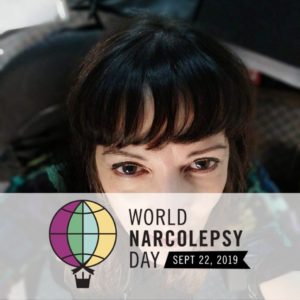
Gloria says she also experiences sleep paralysis, which is the inability to move for a few seconds or minutes upon falling asleep or waking up. This often accompanies the hallucinations creating some perplexing and often terrifying experiences.
People with narcolepsy experience some or all of these symptoms to varying degrees. There is no perfect description of narcolepsy which makes it difficult to diagnose. If you want to know more about the symptoms of narcolepsy check out this factsheet created by Project Sleep.
Managing narcolepsy looks different for everyone.
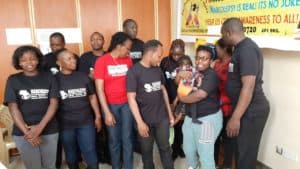
One day Edgar had to drive his boss to a seminar and they were on a tight schedule. The sun was heating up the car and Edgar was feeling sleepy. His boss didn’t know that he had a sleeping disorder so Edgar pretended to check the condition of the vehicle in order to get out for some fresh air to reduce his sleepiness. That’s when he knew he had to get a diagnosis to continue with his career. Now, Edgar works as a driver for Uber. He is married with two kids ages 5 and 8, and says his biggest challenge is working in a hot climate.
Medication is expensive and not easy to access in Nairobi, where Edgar lives. He manages his symptoms with proper sleep hygiene, and five 15-minute naps a day.
Massimo has learned how to listen to his body and recognize when his energy levels are low to recharge with a nap.
“I have a battery that lasts 6 hours. It dies quickly but it charges even faster.” He explains that all he needs is one extra hour of sleep spaced out throughout the day along with his medication and he can function, but it’s difficult to do that in a normal job.
He gets frustrated that his culture allows people to go outside to smoke cigarettes throughout the day but they don’t want to accommodate a couple of short naps into the workplace.
“Naps are a powerful and accessible treatment option but they are not valued by society. ” -Massimo Zenti
Matt also naps to help manage his symptoms. Sleeping in his car is usually the first option but when the car is not nearby, he struggles to find suitable places to take his power-nap. Matt also says the cost of medications in the United States can be a burden, and many people use a combination of medicine and lifestyle adjustments like naps to manage their symptoms.
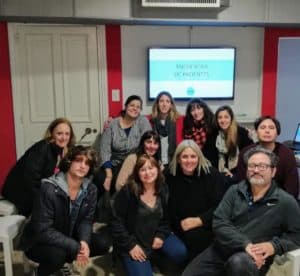
Gloria was in conflict with employers until she was able to adjust her work hours to accommodate her body’s sleep schedule. It took being physically ill, unable to get out of bed from exhaustion for her to go to the boss and ask for a change of hours. Now she works from 3 pm to 11 pm which is what works for her body’s natural sleep rhythm.
Fiona says Australia is known for big beaches, wide-open spaces, deserts, and the outback. The people are casual, easy-going, and laid back. But that doesn’t mean that sleep fits in well.
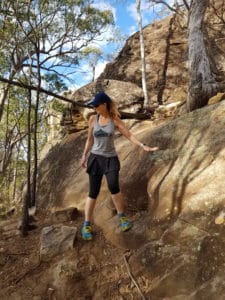
“Having narcolepsy makes it difficult for me to keep up with friends and enjoy a lot of the social activities I used to participate in.” She tries to schedule her days around naps, book appointments at certain times of the day, be prepared to have a cataplexy episode anywhere at any time, only drive short distances, be mindful that each day will be different and some days she may have to cancel plans.
Fiona is still an avid runner and has adapted her lifestyle to accommodate her symptoms. “I can live life to the fullest around my limitations. The main thing is that I still do it with attitude, albeit a sleepier attitude! ”
In conclusion
People all over the world with narcolepsy share so much in common. We are looking forward to joining together on World Narcolepsy Day, and throughout the year to raise awareness, reduce the stigma, and raise up those who are affected by sleep disorders.
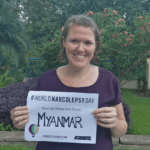






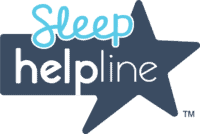
1 Comment. Leave new
Kayla, I know I have already told you via email , but I’m going to say it again! From the bottom of our hearts, thank you. You are so wonderful and we are incredibly grateful to you for all the hard work you put in to this article. You are amazeballs my fellow PWN!!! xxx